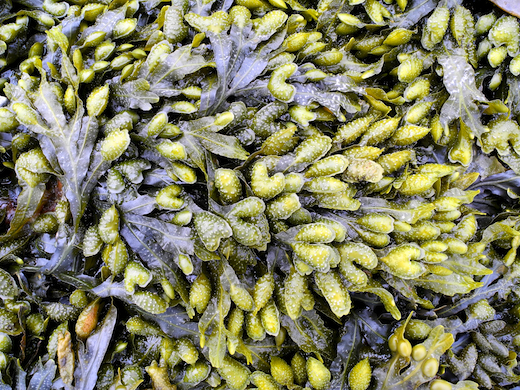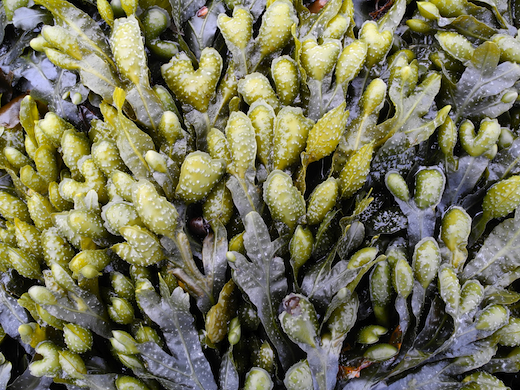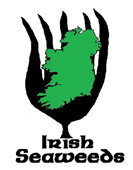Fucus guiryi G.I.Zardi, K.R.Nicastro, E.S.Serrão & G.A.Pearson

Description: Similar in morphology to Fucus vesiculosus, but distinguished from it by hermaphroditic receptacles, the presence of a pronounced receptacle sterile rim, monopodial branching, and the absence of bladders; by the shorter thallus and shorter frond length between the holdfast and the first dichotomy; by a less wide apical frond; by longer and wider receptacles; by a higher ratio of receptacle width:length and receptacle height:length; by higher intertidal zonation and physiological resistance to air exposure. Also similar in morphology to Fucus spiralis but distinguished from it by the presence of a receptacle sterile rim and monopodial branching; by a longer thallus and frond between the holdfast and the first dichotomy; by a wider apical frond; by shorter receptacle height; longer receptacle; wider receptacle; by smaller ratio of receptacle width:length and receptacle height:length; by lower intertidal zonation and physiological resilience to air exposure.
Note: this species was formely included in Fucus spiralis as F. spiralis var. platycarpus (=Fucus platycarpus). Plants in the southern part of the range occur on wave-exposed shores and may be much shorter than those in the northen part of the range.
Etymology: Named in honor of Michael Guiry.
Habitat: Intertidal, where it co-occurs with Fucus spiralis and Fucus vesiculosus on the same shore, average distributional shore height typically in between these two species.
Distribution: Canary Islands, Morocco, Atlantic Iberian Peninsula, France, north to Britain and Ireland.
Photographs: Plants shown here are from Spiddal, Co. Galway. More pictures are available at AlgaeBase.






